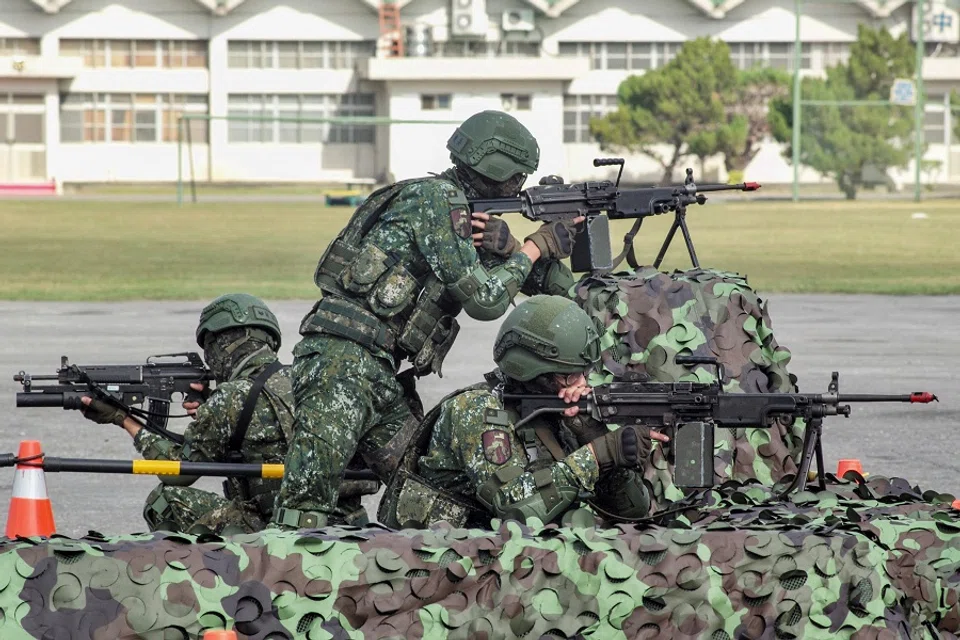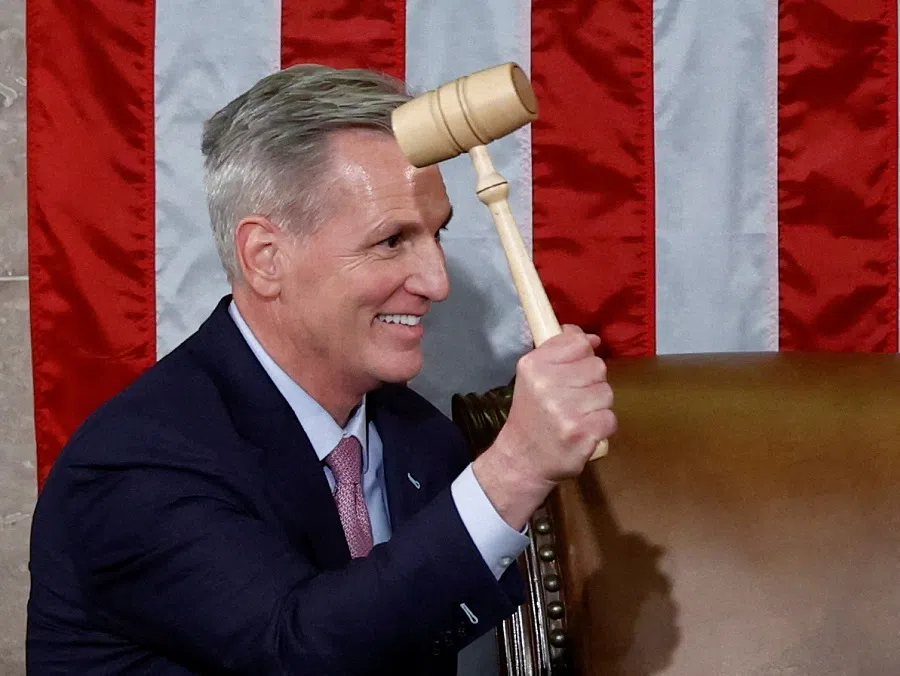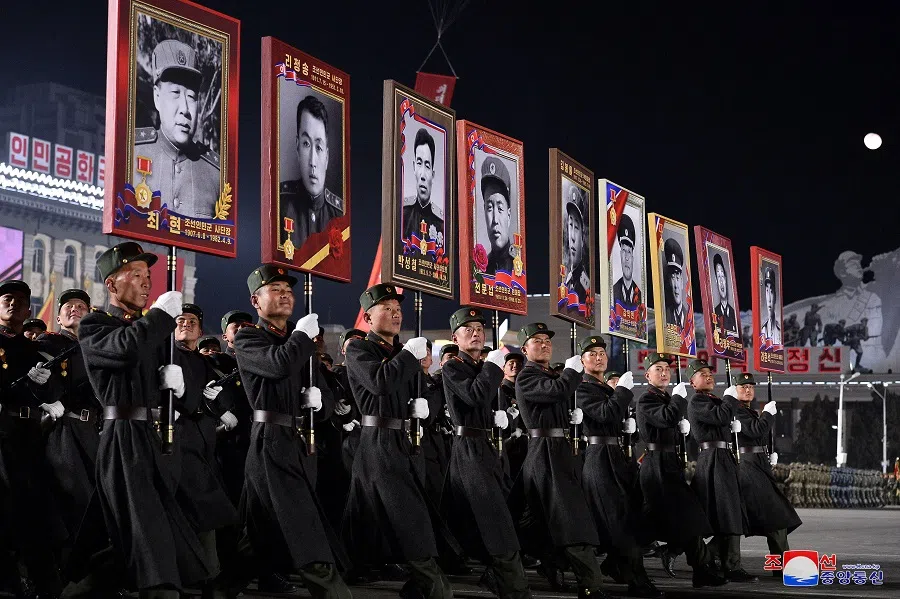Taiwan Strait issue: Taking lessons from history
Tensions in China-US relations are increasing, with the Taiwan Strait issue central to the antagonism between the two major powers. Chinese academic Guo Bingyun assesses four models from history that the US may adopt in the event of an armed reunification, and why these approaches may or may not be effective.

Following the intensification of China-US strategic competition, Taiwan has become a focal point central to China-US relations. The Biden administration continues to hollow out the "one China" principle, with senior US officials frequently visiting Taiwan, prompting lawmakers of US allies to do the same.
Worsening China-US relations
The Biden administration's numerous arms sale to Taiwan repeatedly signals that the August 17 Communique (on US Arms Sales to Taiwan) is invalid, while then third highest-ranking US official House Speaker Nancy Pelosi's visit to Taiwan in August 2022 triggered the biggest Taiwan Strait crisis since 1996.
On 14 September 2022, the US Senate Committee on Foreign Relations overwhelmingly approved the Taiwan Policy Act of 2022, which deepens US-Taiwan relations in areas such as diplomacy, military and the economy. On 7 January 2023, Kevin McCarthy, a China hawk, was elected as US House Speaker. Four days later, he formed a new select committee on China. There has even been recent news that McCarthy would be visiting Taiwan this spring.
Luring other countries to act as proxies is a common tactic that the US has used to maintain global hegemony since the Second World War.

The US's aforementioned moves and the changes in Taiwan's political milieu have led to the worsening of China-US relations and cross-strait relations, prompting mainland China to tilt towards reunification by force.
Indeed, the approach that the US takes in any intervention in an armed reunification would have a significant impact on the direction of the Taiwan Strait situation.
Four models of approach
One, the Ukraine model. Luring other countries to act as proxies is a common tactic that the US has used to maintain global hegemony since the Second World War. Following the outbreak of the Russia-Ukraine war, the US provided Ukraine with weapons, financial aid, and public opinion support, and even slapped Russia with economic sanctions. However, it refrained from deploying troops to Ukraine to avoid getting embroiled in the war, ensuring that it would only reap benefits and not incur any losses.

Through the Russia-Ukraine war, the US has not only achieved the enlargement of NATO but also further tightened its grip on the European Union. It has also weakened the dollar's biggest rival, the euro, and severely eroded Western Europe's strategic advantage in climate politics, thus safeguarding the interests of its own energy interest groups. Indeed, the US has killed many birds with one stone.
The North Korea issue remains an important wedge that strengthens US control over Northeast Asia.
Two, the North Korea model. The Taiwan issue is a remnant of the Cold War, along with the North and South Korea, the North and South Vietnam, and the East and West Germany issues. The US did not get involved in the Korean War from the beginning; it waited until the most critical moment to make a heroic entrance as a "saviour".

After paying a heavy economic, military and political price, the UN forces - which was US-led and mainly comprising US troops - largely maintained the situation in the peninsula prior to the war and basically achieved its strategic goals. The North Korea issue remains an important wedge that strengthens US control over Northeast Asia.
The US saw nearly 60,000 deaths and spent trillions of dollars but still failed to prevent North and South Vietnam from reuniting.
Three, the Vietnam model. To avoid repeating its mistakes of the Korean War, the US initially carried out a special forces war, with Vietnam as a proxy. However, the administration of Lyndon B. Johnson inadvertently turned it into a war between the US and Vietnam. The growing economic, military and public pressure forced the staggering US to pull out of the mire of Vietnam, while the Nixon administration got out by inhumanely turning it into a war between the people of North and South Vietnam.

The US saw nearly 60,000 deaths and spent trillions of dollars but still failed to prevent North and South Vietnam from reuniting. It also left the US at a disadvantage in its competition with the Soviet Union. This was one of the few times since the Cold War that the US joined a war on its own without gathering allies, and it was its worst defeat in history.
Four, the Germany model. The Germany issue after the Second World War was even more complex than that of Korea and Vietnam, but its eventual reunification process proved the smoothest. Only 11 months elapsed between the fall of the Berlin Wall on 9 November 1989 and final reunification on 3 October 1990, during which there were no wars or unrest. The US actively supported German reunification, as a check to France and the Soviet Union.
To reduce the risk to itself, the US is turning Japan from a "shield" to a "spear" in containing China, which makes the North Korea model more likely.

From 'shield' to 'spear'
In the four models of approach mentioned above, the conditions for the Germany model do not exist, whether between mainland China and Taiwan, or between China and the US, and so it is almost not worth considering.
Although the cost is high for the North Korea model, there is no real damage to the US's national strength or international status, so it is an acceptable approach to some extent. To reduce the risk to itself, the US is turning Japan from a "shield" to a "spear" in containing China, which makes the North Korea model more likely.
The tragedy of the Vietnam model was a painful lesson, and the US would be reminded to avoid a repeat of it. But as German philosopher Georg Hegel said, "The only thing that we learn from history is that we learn nothing from history." So, while the Vietnam model is much less likely than the Korea model, it is not entirely moot.

In terms of international law, Taiwan and Ukraine are not comparable, but their roles in big country strategy are highly similar. The US would be happy for the Ukraine model to work, but whether Taiwan will become like Ukraine would mostly depend on mainland China's resolve and capability in reunification by force.
For mainland China, with no hope of the Germany model and given that the other three models are less than ideal, it has to keep seeking other solutions that will benefit itself. Even if the Taiwan issue becomes like Ukraine, if mainland China can settle the issue within three months or less, and create a streamlined Ukraine model (or Taiwan model), that would also be a huge success.



![[Big read] China’s 10 trillion RMB debt clean-up falls short](https://cassette.sphdigital.com.sg/image/thinkchina/d08cfc72b13782693c25f2fcbf886fa7673723efca260881e7086211b082e66c)
![[Big read] Love is hard to find for millions of rural Chinese men](https://cassette.sphdigital.com.sg/image/thinkchina/16fb62fbcf055b710e38d7679f82264ad682ce8b45542008afeb14d369a94399)
